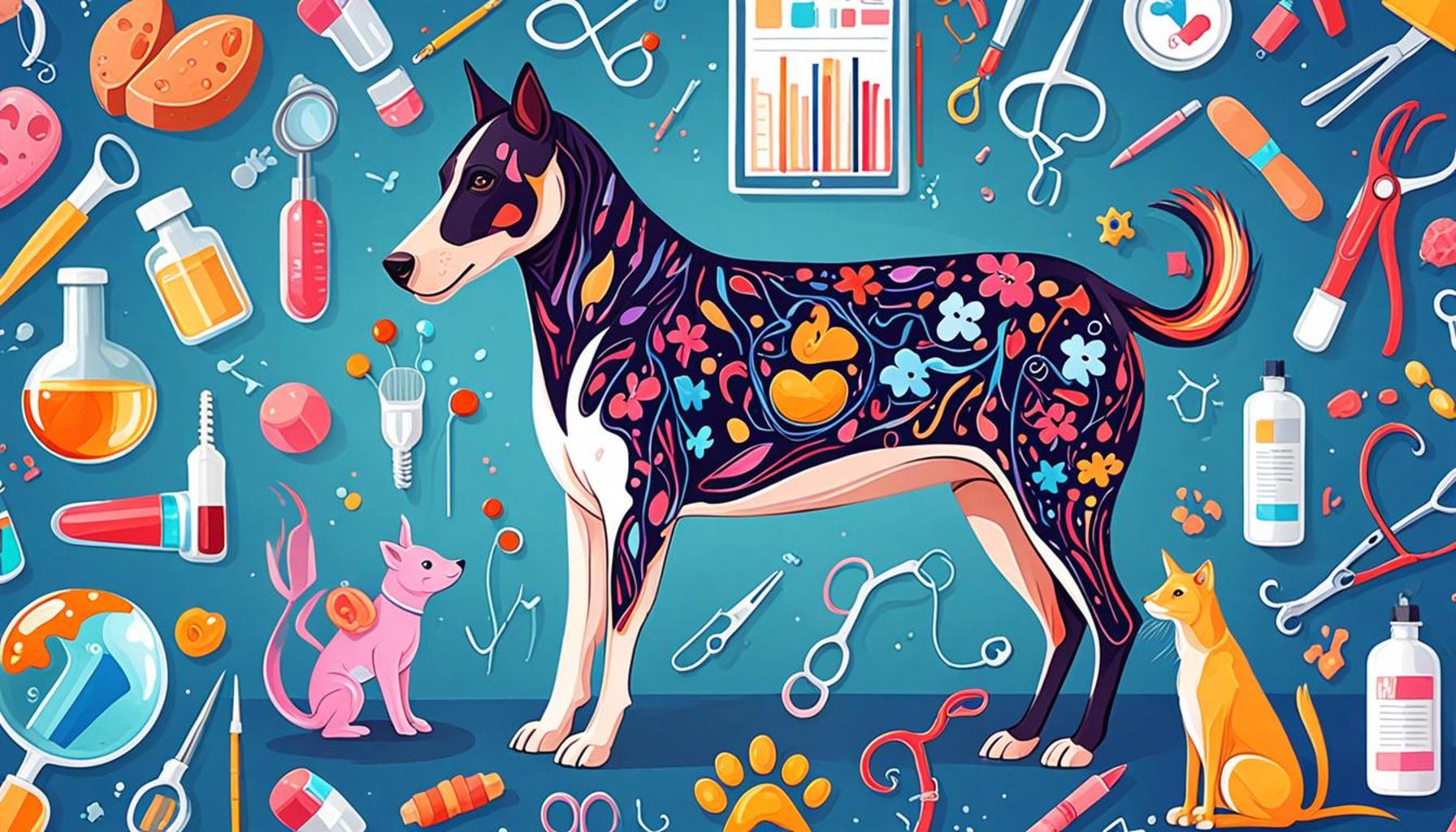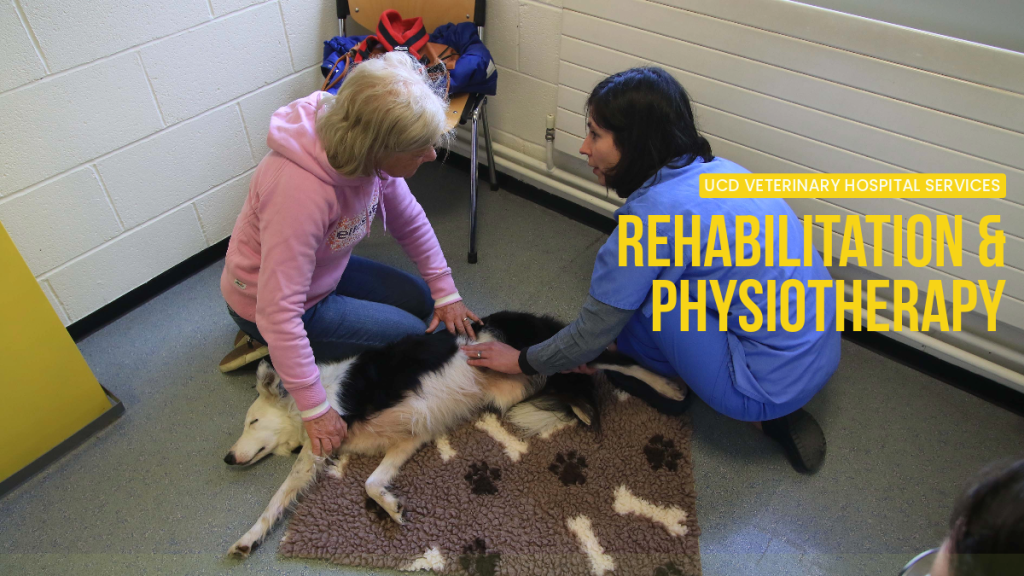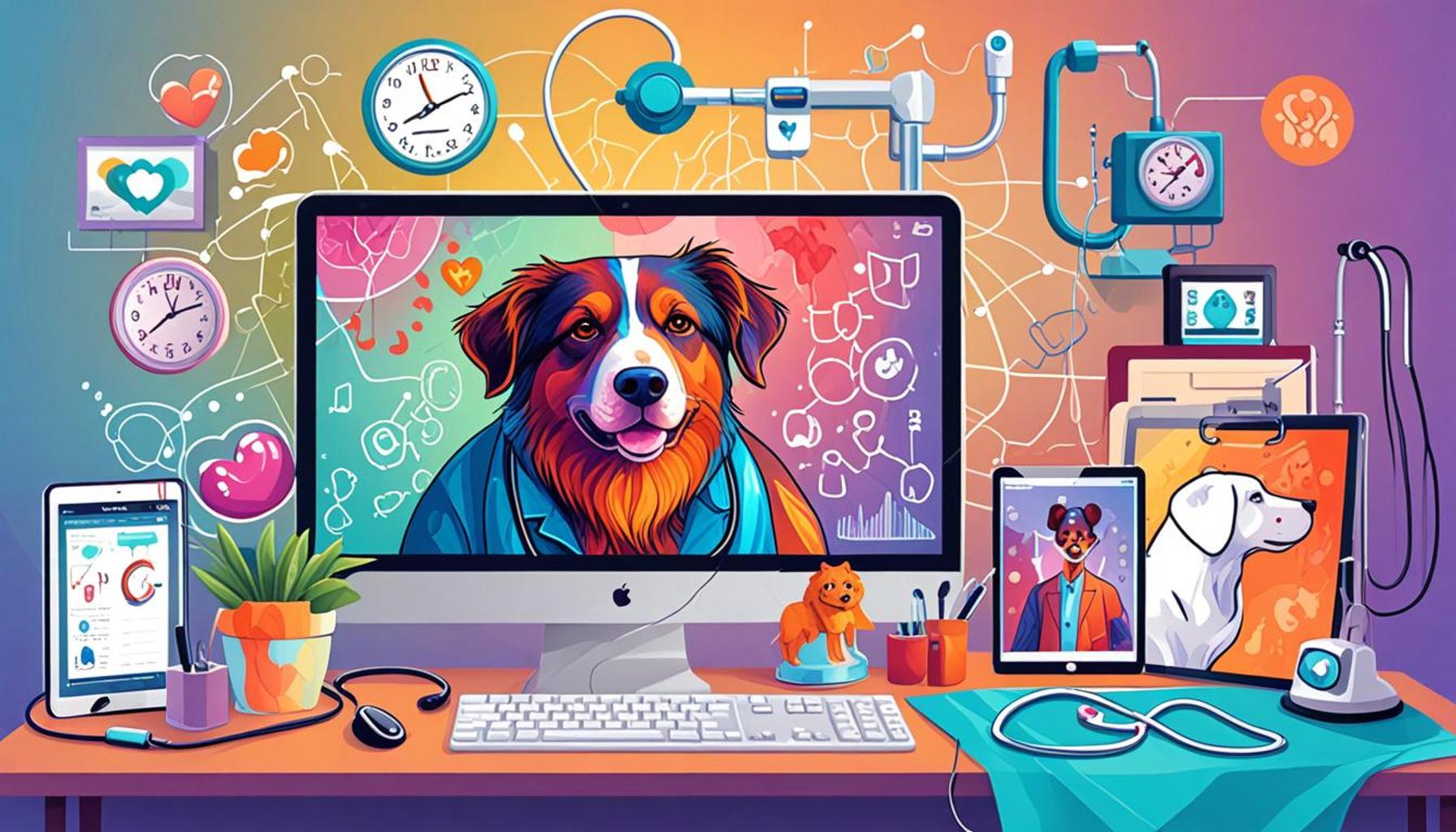Innovative Therapies in Veterinary Health: The Future of Animal Care

Innovative Advancements in Veterinary Medicine
The landscape of veterinary medicine is witnessing a remarkable shift, characterized by a series of groundbreaking therapies that aim to transform both the quality and accessibility of animal healthcare. These innovative therapies are advancing our understanding of animal health, thereby enhancing the overall well-being of pets and subsequently broadening the scope for future medical practices in the field.
As veterinary practices increasingly incorporate technology and novel treatment methodologies, the outcomes for our beloved pets are improving significantly. Experience shows that both urban and rural areas are beginning to witness these advancements firsthand. Here are some of the most notable innovations gaining traction:
- Regenerative medicine: This frontier employs the use of stem cells and growth factors to repair and rejuvenate damaged tissues and joints. For instance, stem cell therapy has shown promise in treating conditions like arthritis in dogs and cats. By using the pet’s own stem cells, veterinarians can facilitate natural healing, often leading to reduced pain and increased mobility.
- Telemedicine: With the widespread use of technology, telemedicine has emerged as a vital tool for veterinary care, providing pet owners with remote consultations. This approach not only increases access to healthcare in underserved rural areas, but it also allows for prompt attention in emergencies. Through video calls, pet owners can discuss symptoms with a veterinarian and receive guidance on the next steps without the stress of traveling.
- Integrative therapies: Combining traditional veterinary medicine with holistic approaches such as acupuncture and herbal treatments, integrative therapies provide a comprehensive approach to animal care. For example, acupuncture can effectively manage chronic pain in pets while enhancing their overall wellbeing when used alongside conventional treatments.
These advancements are particularly crucial as they not only address chronic health issues but also revolutionize preventive care. By adopting cutting-edge solutions, pet owners are better equipped to make informed decisions about their pets’ health. The shift toward personalized treatment plans tailored to each animal’s needs represents the future of animal care.
As we embrace and integrate these novel therapies, veterinary professionals are not only enhancing the quality of life for animals but also setting a proactive pathway toward a healthier future. In doing so, they are transforming the way we understand and interact with our furry companions, ensuring that their medical needs are met with compassion and expertise.
In a world where pets are increasingly regarded as family members, the pursuit of advanced veterinary care has never been more important. Whether in bustling cities like New York or tranquil towns across the Midwest, these innovative therapies are making a significant impact, promising a healthier and brighter future for animals throughout the United States.

DIVE DEEPER: Click here to learn more
The Rise of Personalized Veterinary Care
In recent years, the veterinary community has shifted its focus towards personalized medicine, a tailored approach that considers the unique genetic makeup, lifestyle, and environment of each animal. Unlike conventional treatments that often adopt a one-size-fits-all methodology, personalized veterinary care leverages advances in genomics and other indicators to create bespoke health plans. This innovative methodology stands to revolutionize the way veterinarians address health issues, paving the way for more effective and proactive care.
This tailored approach is powered by the increasing availability of genetic testing for pets, allowing veterinarians to identify predispositions to certain health conditions. For example, breeds known for specific ailments, such as hip dysplasia in German Shepherds or heart disease in Cavalier King Charles Spaniels, can benefit from early screening and targeted interventions. The implications are profound, as vets can advise pet owners on preventive measures and lifestyle changes that can mitigate risks before they develop into serious issues.
Moreover, pet owners are becoming more informed about their animals’ health, spurred on by a wealth of online resources and community engagement. As a result, there’s an uptick in demand for more holistic and personalized treatment options. Here are some other impactful innovations shaping this movement:
- Advanced imaging technologies: Tools such as MRI and CT scans are now available in veterinary practices, offering unprecedented visibility into the health of animals. This detail helps diagnose conditions more accurately and informs effective treatment strategies.
- Wearable health devices: Just as with humans, advances in technology have led to the development of health monitoring devices for pets. These gadgets can track vital signs, activity levels, and even dietary habits, providing valuable data for veterinarians and pet owners alike.
- Advanced pharmacogenomics: Understanding how different animals metabolize drugs can lead to safer and more effective medication plans. Customized drug regimens ensure that pets receive the right treatment in the right doses, minimizing adverse reactions.
These innovations in personalized veterinary care are not merely about treating existing conditions but nurturing a culture of preventative health. By focusing on proactive measures, veterinarians can work with pet owners to foster healthier lifestyles, lower the incidence of disease, and ultimately enhance the longevity and quality of life for their beloved companions.
As we continue to explore this evolving paradigm of animal healthcare, the integration of cutting-edge technologies with compassionate veterinary practice represents a pivotal moment for animal care. The future, indeed, looks promising for our four-legged friends, with the prospect of healthier, happier lives becoming an attainable reality.
| Category | Details |
|---|---|
| Regenerative Medicine | Utilizes cells, tissues, and organs to repair damaged tissues. Therapies like stem cell treatments promote healing. |
| Telemedicine | Allows remote consultations, offering convenience and timely care for pets, especially in emergencies. |
| Gene Therapy | Targets genetic disorders at the root, providing hope for treating hereditary diseases. |
| Advanced Imaging Techniques | Improves diagnosis accuracy, leading to better treatment plans through imaging like MRI and CT scans. |
The evolution of veterinary health is undeniably linked to innovative therapies that not only improve the quality of life for animals but also extend their longevity. Techniques such as regenerative medicine and gene therapy are at the forefront, enabling veterinarians to address conditions that were previously deemed untreatable. Moreover, the advent of telemedicine has transformed the way pet owners interact with veterinary care, offering a bridge to consultations that provide critical support without the stress of travel. As diagnostic capabilities expand with advanced imaging techniques, veterinarians can now pinpoint health issues more accurately. This has paved the way for more tailored treatment plans, enhancing outcomes for numerous animal patients. The exploration of these therapies signifies not just a leap forward in veterinary medicine, but also a profound commitment to advancing animal welfare. With every breakthrough, the horizon for enhanced animal care grows broader, enticing readers to delve deeper into the future of veterinary health innovations.
DISCOVER MORE: Click here for a helpful guide
Regenerative Medicine: Healing at the Cellular Level
Among the most exciting frontiers in veterinary healthcare is regenerative medicine. This field offers treatments that harness the body’s own healing abilities using advanced techniques such as stem cell therapy and platelet-rich plasma (PRP)</strong) therapy. These methods provide groundbreaking options for managing chronic injuries and conditions that were once deemed untreatable.
Stem cell therapy involves the extraction of stem cells, typically from the animal’s fat or bone marrow, and then reintroducing them to an injured area to promote healing. This therapy has shown remarkable success in treating conditions such as arthritis, tendon injuries, and even some forms of congenital diseases. A notable case includes dogs with elbow dysplasia, where stem cell injections not only improved pain levels but also restored a level of mobility previously lost. With ongoing research and refinement, the potential applications of this treatment could expand to include spinal cord injuries and degenerative diseases, significantly enhancing the quality of life for our pets.
On a similar note, PRP therapy uses the animal’s blood to concentrate growth factors that facilitate healing. After drawing a small amount of blood, veterinarians spin it in a centrifuge to separate the platelets from other components. The resulting PRP is then injected into the injured area, stimulating tissue regeneration. This approach is gaining traction for its effectiveness in treating joint disorders and post-surgical recovery, reflecting a growing trend in leveraging own biological materials for healing.
The Integration of Artificial Intelligence in Veterinary Diagnostics
Artificial Intelligence (AI) is making waves across various sectors, and veterinary medicine is no exception. The integration of AI-powered diagnostics has the potential to enhance diagnostic accuracy, reduce wait times, and ultimately transform the way veterinarians approach animal healthcare.
AI tools can analyze vast amounts of data, such as medical histories, laboratory results, and imaging scans, to assist in diagnosing conditions. This technology acts as a complementary tool to experienced veterinarians, allowing for more informed decisions. For example, AI algorithms can identify patterns in radiographs that may be missed by the human eye, speeding up the diagnosis of conditions like tumors or orthopedic issues. Companies like Vetology and PetAlive are pioneering efforts to integrate AI into routine veterinary practices. These tools not only enhance diagnostic precision but also free up valuable time for veterinarians, allowing them to focus on patient care and client communication.
The Role of Telehealth in Veterinary Services
As pet ownership has surged in recent years, so too has the demand for accessible veterinary services. Telehealth is emerging as a powerful solution to bridge gaps in traditional care, particularly in rural or underserved areas. Through video conferencing and mobile applications, pet owners can now consult with veterinarians from the comfort of their homes, discussing symptoms and receiving guidance on care. This innovation has been especially invaluable during the COVID-19 pandemic when many pet owners hesitated to visit clinics in person.
Additionally, telehealth can enhance follow-up care, enabling quick check-ins after procedures or adjustments to treatment plans based on real-time feedback. It cultivates a continuous dialogue between veterinarians and pet owners, emphasizing preventative care and fostering stronger health management.
With these advancements in personalized medicine, regenerative therapies, AI diagnostics, and telehealth, the landscape of veterinary care is evolving rapidly. The incorporation of these innovative therapies signifies a future where animal health is more proactive, efficient, and centered on individualized care. As these technologies continue to develop, the potential benefits for pet health and well-being are poised to reach new heights.
DIVE DEEPER: Click here to learn more about positive reinforcement in dog training
Conclusion: A Promising Horizon in Veterinary Health
As we stand on the brink of a new era in veterinary healthcare, the emergence of innovative therapies showcases a promising future for our animal companions. From regenerative medicine that utilizes the body’s natural healing processes to advanced AI diagnostics improving accuracy and efficiency in patient assessment, these developments are radically transforming how veterinarians approach care. Telehealth further expands accessibility, ensuring that expert advice is reachable for pet owners, whether in urban settings or remote locations.
The key takeaway from these advancements is the shift towards personalized medicine. Animals now benefit from tailored treatment options that not only address existing ailments but also focus on enhancing their quality of life. For example, with regenerative therapies, pets that once faced limited mobility due to chronic conditions are experiencing renewed activity levels, while AI tools shorten the time needed to reach a diagnosis, enabling quicker treatment interventions.
As research continues and technology evolves, the potential applications of these therapies will undoubtedly expand, presenting exciting possibilities for conditions previously thought to be beyond treatment. The intersection of innovation and compassion in veterinary care signifies a hopeful path forward, and it is imperative for pet owners to stay informed about these advancements. By embracing these emerging trends in veterinary health, we can look forward to a future where all animals receive the highest quality of care, ultimately strengthening the bond between humans and their beloved pets.


